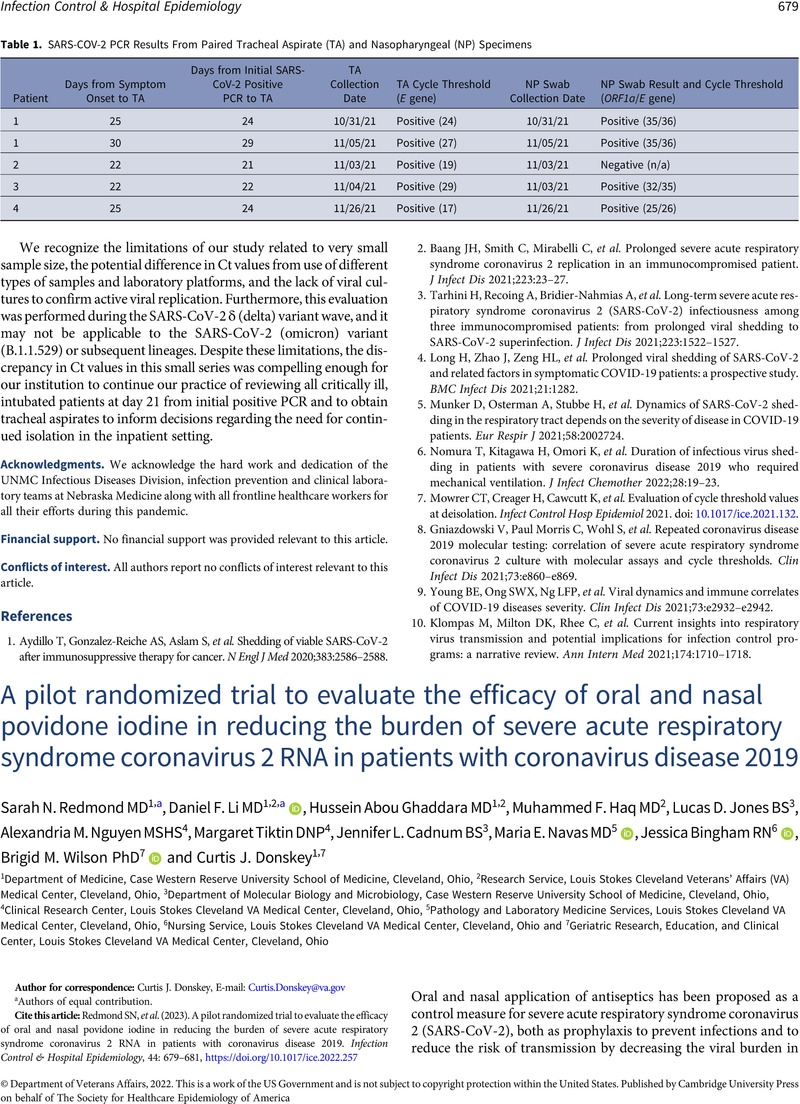Crossref Citations
This article has been cited by the following publications. This list is generated based on data provided by Crossref.
Sbricoli, Luca
Schiavon, Lucia
Brunello, Giulia
Brun, Paola
Becker, Kathrin
and
Sivolella, Stefano
2023.
Efficacy of different mouthwashes against COVID-19: A systematic review and network meta-analysis.
Japanese Dental Science Review,
Vol. 59,
Issue. ,
p.
334.
Ting, Miriam
Dahlkemper, Alex
Schwartz, Jeremy J.
Woodfork, Manzel
and
Suzuki, Jon B.
2023.
Preprocedural Viral Load Effects of Oral Antiseptics on SARS-CoV-2 in Patients with COVID-19: A Systematic Review.
Biomedicines,
Vol. 11,
Issue. 6,
p.
1694.
Donskey, Curtis J.
2023.
High technology and low technology measures to reduce risk of SARS-CoV-2 transmission.
American Journal of Infection Control,
Vol. 51,
Issue. 11,
p.
A126.




